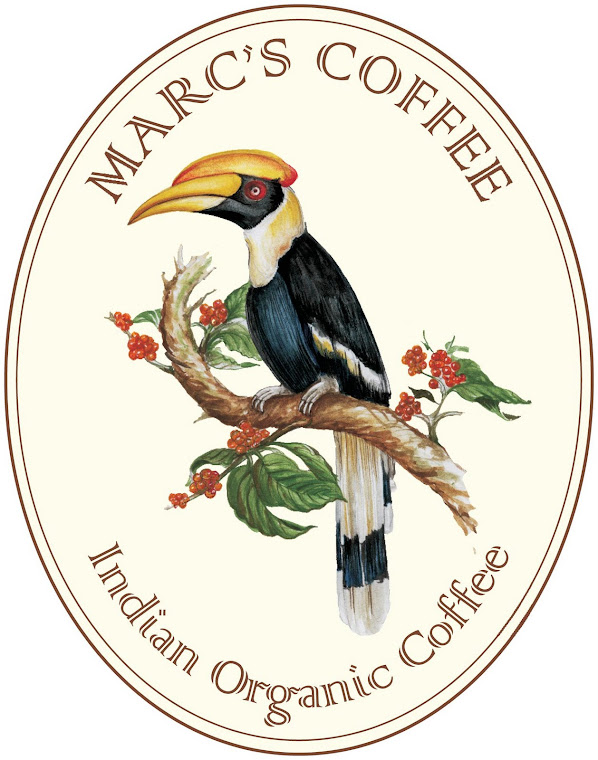
What is all about coffee's aroma?
The aroma of a coffee is responsible for all flavor attributes other than the mouthfeel and sweet, salt, bitter, and sour taste attributes that are perceived by the tongue. Therefore, it might be said that the aroma is the most important attribute to specialty coffee. Even instant coffee has the components responsible for stimulation of our taste buds. The difference, however, is that instant coffee lacks most of the aromatic volatile compounds causing a dramatic decrease in the overall flavor.
Aroma is perceived by two different mechanisms. It can either be sensed nasally via smelling the coffee through the nose or retronasally. Retronasal perception occurs when the coffee is either present in the mouth or has been swallowed and aromatic volatile compounds drift upward into the nasal passage.
The number of aromatic compounds found in coffee increases every year. Today, the number is well over 800 and as our analytical methods become more precise more will be uncovered. Yet, the perception of aroma is dependent upon both the concentration of the compound and its odor threshold. With that said, understanding coffee aroma is not as difficult as understanding how over 800 compounds interact with the olfactory epithelium. It is probable that a relatively small group of compounds that share both a high concentration and a low odor threshold make up the fragrance we know as coffee aroma. This article will discuss the recent research that has narrowed in on these aroma impact compounds.
Illy listed the following the development of volatile compounds in coffee (112):
1) Maillard or non-enzymatic browning reaction between nitrogen containing substances, amino acids, proteins, as well as trigonelline, serotonine, and carbohydrates, hydroxy-acids and phenols on the other.
2) Strecker degradation.
3) Degradation of individual amino acids, particularly, sulfur amino acids, hydroxy amino acids, and proline.
4) Degradation of trigonelline.
5) Degradation of sugar.
6) Degradation of phenolic acids, particularly the quinic acid moiety.
7) Minor lipid degradation.
8) Interaction between intermediate decomposition products.
In a review article published by Clarke, he asserts that various research groups have identified 150 aliphatic compounds including 56 carbonyl compounds and 9 sulfur containing compounds; 20 alicyclic compounds, including 10 ketones; 60 aromatic benzenoid compounds, including 16 phenols; 300 heterocyclic compounds, including 74 furans, 10 hydrofurans, 37 pyrroles, 9 pyridines, 2 quinolines, 70 pyrazines, 10 quinoxalines, 3 indoles, 23 thiophens, 3 thiophenones, 28 thiazoles, and 28 oxazoles (34).
Table 1 shows the compounds that are likely to be the most influential in coffee aroma This data was compiled from the work of both Grosch and Blank and is by no means exhaustive. It should be noted that the OAV alone does not dictate which compounds are the most important compounds present in coffee, but rather suggests compounds that are likely to have a large impact on the aroma of coffee. The furans are found to be the most predominant group of compounds amongst the coffee aromatics. They typically have caramel-like odors since they result from the pyrolysis of sugars. Shibamoto claims that furans produce key aroma notes when secondary reactions take place with sulfur containing compounds (77).
Table 1. Important compounds in coffee aroma as summarized by Grosch. Click on compound name for more information.
Volatile1 Conc. (mg/L)1 OAV1 Aroma Description2
(E)-ß-Damascenone
1.95x10-1
2.60x105
honey-like, fruity
2-Furfurylthiol
1.08
1.10x105
roasty (coffee)
3-Mercapto- 3-methylbutylformate
1.30x10-1
3.70x104
catty, roasty
3-Methyl-2-buten-1-thiol
8.20x10-3
2.70x104
amine-like
2-Isobutyl-3-methoxypyrazine
8.30x10-2
1.70x104
earthy
5-Ethyl-4-hydroxy- 2-methyl-3(2H)-furanone
1.73x101
1.50x104
Guaiacol
4.20
1.10x104
phenolic, spicy
2,3-Butanedione (diacetyl)
5.08x101
3.40x103
buttery
4-Vinylguaiacol
6.48x101
3.20x103
spicy
2,3-Pentanedione
3.96x101
1.30x103
buttery
Methional
2.40x10-1
1.20x103
potato-like, sweet
2-Isopropyl-3-methoxypyrazine
3.30x10-3
8.30x102
earthy, roasty
Vanillin
4.80
1.90x102
vanilla
4-Hydroxy-2,5-dimethyl- 3(2H)-furanone (Furaneol)
1.09x102
1.70x103
caramel-like
2-Ethyl-3,5-dimethylpyrazine
3.30x10-1
1.70x102
earthy, roasty
2,3-Diethyl-5-methylpyrazine
9.50x10-2
1.00x102
earthy, roasty
3-Hydroxy-4,5-dimethyl- 2(5H)-furanone (Sotolon)
1.47
7.50x101
seasoning-like
4-Ethylguaiacol
1.63
3.00x101
spicy
5-Ethyl-3-hydroxy-4-methyl- 2(5H)-furanone (Abhexon)
1.60x10-1
2.00x101
seasoning-like
Table References
1) Grosch, 151.
2) Blank et al., 124.
The pyrazines are the second most abundant class of compounds and contribute to the roasted, walnut, cereal, cracker, or toast-like flavors in coffee. Along with thiazoles, the pyrazines have the lowest odor threshold and therefore significantly contribute to the coffee aroma. Next, the pyrroles are responsible for some of the sweet, caramel-like, and mushroom-like aromas in coffee. Conversely, the thiophens are known to have a meaty aroma and are thought to be produced from Maillard reactions between sulfur containing amino acids and sugars. Thiazoles have an even smaller presence in the overall aroma and are said to be formed via sugar degradation.
Definitions:
Odor threshold - minimum detectable quantity via nasal perception.
Taste threshold - minimum detectable quantity via retronasal perception.
Odor Activity Value (OAV) - ratio of the concentration of a molecule to its odor threshold.
Flavor dilution factor - when high signifies a key odorant.
Sources
Clarke, R. J. The Flavour of Coffee. In Dev. Food Science. 3 B. 1986. 1-47.
Blank, I.; Sen, A.; and Grosch, W. 14th ASIC Colloq. San Francisco. 1991. 117-129.
Grosch, W. 16th ASIC Colloq. Kyoto. 1995. 147-156.
Illy, A. and Viani, Rinantonio. Espresso Coffee: The Chemistry of Quality.



1 comment:
Només els que ens agrada el cafè podem apreciar veritablement aquesta imatge. Salut!
Post a Comment